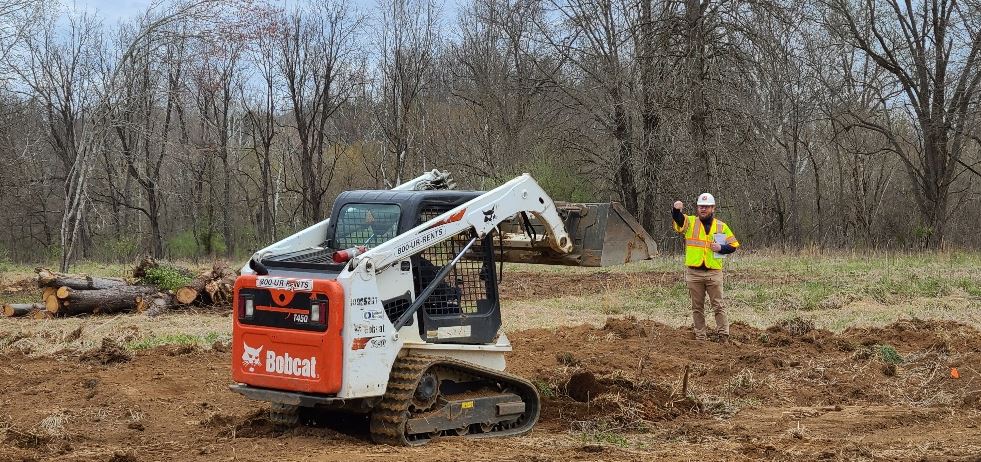A skid steer is a versatile piece of equipment used for construction and landscaping projects. Wondering how the skid steer got its name? The wheels (or treads) of a skid steer are fixed in one direction. In order to turn, the driver applies different speeds to the left or right wheels, causing the wheels to 'skid' into the turn. They are designed to maneuver easily in tight spaces. Skid steers also reduce the need to have more heavy-duty machines for different jobs, as many attachments come with every size and model. A few of the more common skid steer uses are excavation, digging or trenching, landscaping, and construction.

Landscape Architecture Class at Milton Airfield using a skid steer in 2022
Like many tools and other heavy equipment, skid steers are complex and potentially dangerous machines to control. They require simultaneous use of the hands and feet to operate most effectively. During use, the center of gravity shifts as the bucket or attachment is raised or lowered or when operated on a slope. This shift increases the potential for roll over/tip-over incidents. Operators must be aware of the significant blind spots that are present and be aware of the crush hazard inherent in the lifting arms. There are also significant hazards to those working around or near the skid steer due to the movement of the machine during operation. Other factors, such as ice, mud, and slick work areas, may increase the risk of an incident. It is crucial for skid steer operators to understand the hazards invlolved while operating a skid steer, and to understand the safety principles required to keep themsleves and others safe while operating.
Training
Faculty, staff, and students whose work duties or studies require them to utilize skid steers must complete classroom and hands-on training. Trainees may operate skid steers only under the direct supervision of individuals who have the knowledge, training, and experience to train operators and evaluate their competency. Contact EHS at 434.982.4911 to determine how to acquire training.
Inspections
Operators will complete a documented pre-inspection every day that a skid steer is used, to assure that parts, equipment and accessories are in safe operating condition and free of apparent damage that could cause failure while in use. Any deficiencies will be promptly reported to a supervisor. Inspection records should be retained for at least three years. An inspection checklist is in the EHS Skid Steer Safety Program (pdf|word).
Contact EHS at 434.982.4911 for questions and guidance.
The EHS Skid Steer Safety Program (pdf|word) is intended to address Earthmoving Equipment as defined in 29 CFR§1926.602 Material Handling equipment, and 29 CFR§1926.959 Mechanical Equipment, to reduce the risk of work-related injury or fatality by maximizing personal safety during heavy equipment operation. There are no generalized OSHA Standards for Heavy Equipment Operators. The University recognizes the hazards associated with the operation of heavy equipment and has developed this program to establish safety procedures and training requirements for faculty, staff, and students. The safety procedures developed in this program are considered supplemental to the Manufacturer's Operator and Safety Manuals. The program covers all UVA divisions and departments except units whose leadership adopts a program specific to their operations (e.g., Facilities Management).
OSHA Publication - Skid Steer Safety